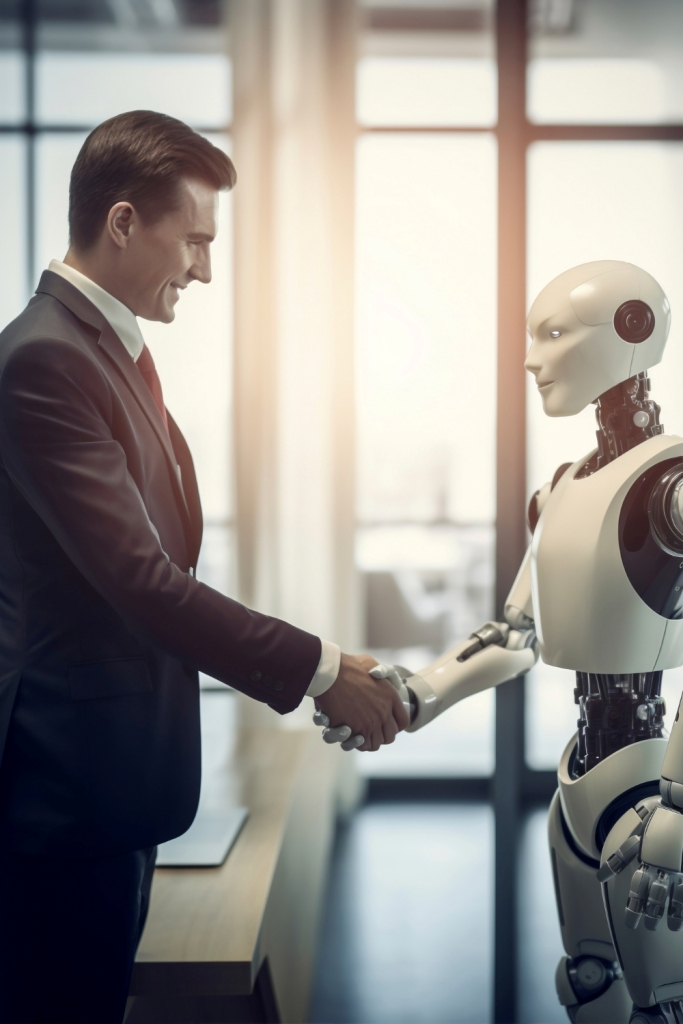In 2024, Generative AI can be used to write code, conceptualize product designs, produce marketing content, optimize operations, facilitate customer service, and significantly hasten scientific research and discovery. That’s a lot of work it can automate. It can be used on its own or with people overseeing the process.
How will AI impact women at work? Let’s find out.
A range of research is being conducted on AI’s potential impact on the future of work. A report by McKinsey says that by 2030, 30 per cent of hours worked today will be mechanized by a combination of automation and Generative AI. A report by the International Labor Organization states that AI could replace around 4-8% of jobs held by women worldwide; in contrast, only 1-3% of male employment faces a similar risk. Overall, AI could impact 300 million full-time jobs, with legal workers and administrative staff at the highest risk.
But is the story all bleak? No, it is not. The same survey also states that AI is set to boost global labour productivity, with an estimated potential increase in annual global GDP by 7%. AI will also lead to the creation of new jobs in STEM – so women need to think about how the future of work is going to be impacted by artificial intelligence and machine learning and how to use AI to their advantage.


Impact on Women at Work
Interestingly, certain industries are less susceptible to the impacts of AI due to their focus on human-centric tasks, such as nursing, teaching, childcare and aged care, which are predominantly staffed by women at present.
However, many women work in clerical roles such as office support, accounting clerks, customer service and food service. And the ILO report says that 82% of clerical job tasks are exposed to the risk of AI automation. However, remember that it is always possible to re-skill oneself to transition to new roles.
Rise of New Jobs
I think that the AI transition will boost job opportunities for positions demanding intricate problem-solving abilities, critical thinking, creativity, and sophisticated technical skills.
Already, new job profiles are on the rise, like prompt engineering – a job that requires writing text instead of code to test AI chatbots. Also, businesses increasingly need people to supervise how the tech operates. Jobs like an AI trainer or an AI-focused ethicist are, therefore, growing in demand.


New Way of Hiring with AI
In my career, I have seen that a great deal of skills development happens on the job. Earlier research by MGI supports what I’ve observed – they discovered that 40 per cent of the average person’s lifetime earnings in the US can be attributed to work experience.
So, I feel that a lot of employers can benefit from using Generative AI in hiring. Instead of, say, relying solely on prior experience that matches the responsibilities of an open role, businesses can evaluate candidates on their capacity to learn, their attitude, and their transferable skills. Here I want to cite an interesting example. In what is believed to be the first academic study of its kind, researchers from Monash University and the University of Gothenburg found that human recruiters hiring for a web designer role scored women substantially lower than men when they knew their gender, but equal to men when the gender was hidden.
This means that women would land more roles in tech if employers used AI in the recruitment process. The study found that using an AI tool in the recruitment process almost doubled the number of women considered in the top 10 per cent of candidates.
Addressing the Gender Gap in STEM
As we all know, AI is bringing about the need for new digital skills.
However, there’s a big gender gap in the AI workforce itself. Only 18% of authors at leading AI conferences are women and more than 80% of AI professors are men (UNESCO report). Data from the World Economic Forum reveal that while nearly half of all workers are women (49%), only 29% work in STEM roles.

The absence of women in the field can result in AI technologies that unintentionally overlook or misunderstand the requirements of approximately half the world’s population!
To counter this imbalance and make AI more beneficial for us all, more women need to train, upskill or re-skill in data science so they have a seat at the decision-making table. With the right training, you could land a role as a machine-learning engineer, data scientist, AI researcher, or ethics specialist.
This will also help to reduce bias against women in the data used to train and curate algorithms. Governments, organizations, and women themselves must work together to make sure that the AI-driven future is an inclusive, equitable one.

Shared By: Srishti Baweja,
COO & Whole Time Director at E2E Networks Limited – a Cloud Computing Platform



